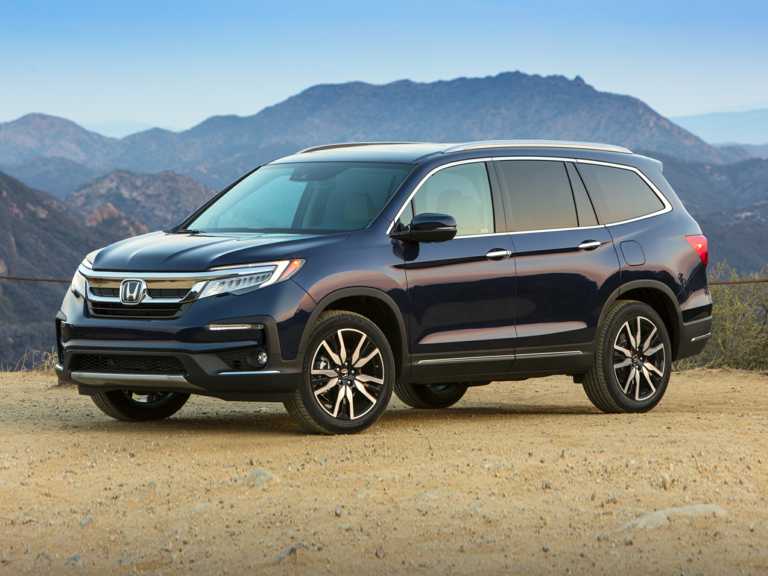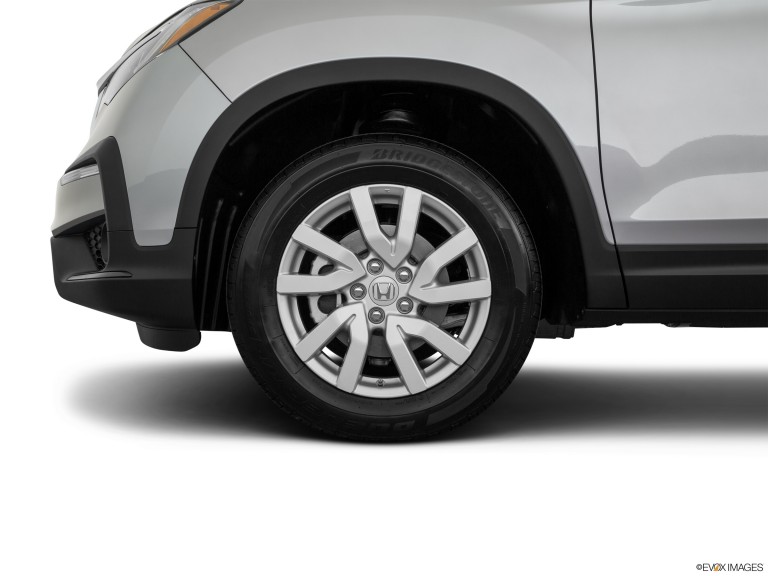As an SUV, you get a lot of work out of your Honda Pilot. It’s fantastic for day-to-day driving but also the type of car that can pull a small trailer. To perform at its top level, you need the best Honda Pilot tires on board.
What are the best tires for a 2020 Honda Pilot?
- Touring: Goodyear Assurance Weatherready – $227.99/tire
- Performance: Sumitomo HTR A/S P03 – $116.99/tire
- All-Terrain: Continental Terraincontact A/T – $187.99/tire
- Winter/Snow: Continental Vikingcontact 7 – $170.99/tire

There’s much more that goes into choosing tires for your Honda Pilot than looking at a few name brand products. Don’t buy just on price, either. You need to think about features, performance, and even the trim model before buying Honda Pilot tires.
Best Tires for the 2020 Honda Pilot

To find the 2020 Honda Pilot best tires on the market, you need to consider how you drive your vehicle. You should also factor in your budget, where you live, and even the tire manufacturer. Here’s some insight to help.
Touring – $227.99/Tire
Probably the most sought after tire for an upgrade for the Honda Pilot is a touring tire. These improve ride quality. The improvement you’ll see is just about handling and overall comfort, rather than any type of weather traction improvement.
Overall, touring tires tend to be a good investment if you have the budget for them and live in an area without harsh winters. They have good tread life for the most part (inferior products may not last). You will also find they do okay in most wet and dry conditions.
There are various touring tires on the market, giving you plenty of options for the quality of the tire. With the Pilot, it’s a good idea to choose an all-season tire, and, if you drive at fast speed regularly, choose a highway all-season tire for improved function and longer life.
Some high-performance touring tires can make your Pilot perform at a higher level with more handling. Some customers rate these as the best for improved comfort. Our recommendation is to choose based on life and a fair price.
Performance – $116.99/Tire
Performance tires give you more handling ability. They do well in both wet and dry weather to create solid traction. You’ll find these are a baseline product in your SUV unless you upgrade to a high-performance tire or even an ultra-high-performance tire.
These tires are a more affordable option but slightly less control over snow and ice conditions. Responsive handling is an important benefit for Honda Pilot drivers, especially if you are pulling anything behind your SUV.
With lateral grooves, these tires improve wet drives; but are not meant for severe winter weather, especially with the Pilot being so low to the ground compared to other SUVs. Look for a good quality to overcome this tire’s limitations.
Honda Pilot owners state these tires are solid and can perform well if you buy the right brand. Some concerns are present on early wearing out of the tread, but that may be due to an inferior product purchase.
All-Terrain – $187.99/Tire
Some people take their Pilot out onto the dirt road for an adventure, even though it does not have all of the other vehicles’ off-roading capabilities. Yet, it does provide you with a lot of spunk when you have the right tires on board. All-terrains can help.
All-terrain tires have a solid level of performance to handle uneven road conditions and even wet conditions. You will find they have a firm ride on paved roads, which will provide a more confident feel while out on wet roads.
The Honda Pilot can surely benefit from all-terrain tires, which are great when driving in rough conditions. The terrain really determines the tires’ overall tread life even though they are built for more impact.
Consumers report all-terrain tires are high-performance and fun to drive. Some report they have a lot of grip on the road while still being able to overcome rough surfaces. Not many Pilot owners add them because of the cost, but they can offer some nice features.
Winter/Snow – $170.99/Tire
If you’re after a solid performance tire in the winter months (especially if you are up north where there is a lot of snow), winter tires are a must. You can get a decent set of winter tires for the Pilot without breaking the bank, thanks to the range of options.

Keep in mind that winter tires are designed with larger gaps between the treads. This helps to move all of the snow and slush from between the tire and the roadway out of the way, giving you more grip strength. They also do well with ice.
Winter tires can be hard to buy because of the overall style. Metal studs are available on some but may only be worthwhile for those who have a serious amount of snow to plow through (or maybe you’re even putting a plow on your SUV).
Customers who buy snow tires often note they are worthwhile if you invest big – big wheels with studs. Others note these tires are a good option for icy conditions and compacted snow. They can also provide superior handling in dry conditions.
People Also Ask
A variety of options exist when you’re looking for the Honda Pilot best tires on the market. But you may have other tire questions.
Does the 2020 Honda Pilot come with a spare tire?
The 2020 Honda Pilot comes with a spare tire. It is not a full-size tire, but a compact one. You should only drive on it for about 50 miles. Get your vehicle into the dealership or repair shop quickly to avoid problems with it.
The spare tire in a Honda Pilot is located in the cargo area under the floor mat. You’ll need to remove the bolt holding it into place. Most vehicles come with the tools you need to change a flat tire on a Honda Pilot.
What’s the recommended tire pressure for a 2020 Honda Pilot?
The tire pressure for the 2020 Honda Pilot is 32 psi for the front and the back. If you have other tires outside of the manufacturer’s recommendations, that may change your psi level.
How do you reset the tire pressure indicator on a 2020 Honda Pilot?
It’s easy enough to do using your display or the steering wheel buttons to navigate the dash display. First, be sure to put the right tire pressure into the tires and check it. Then, turn the car to the “on” position without actually starting it.
Use the buttons to move to “Menu” and then “Customize Settings.” You will then click on “TPMS Calibration” and “Initialize.” Click “Yes” to confirm and then “Menu” to exit the system. It may take a 20-minute drive or up to 50 miles for it to fully reset.